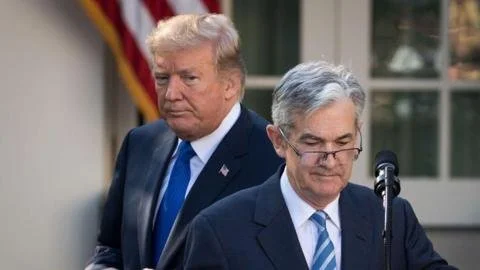Trump vs. The Fed: The Battle Over Interest Rates and Economic Policy
In a recent outburst, President Donald Trump criticized the Federal Reserve for maintaining unchanged interest rates, despite his persistent calls for cuts. After the Fed decided to keep the key interest rate steady at 4.25% to 4.5% during its January meeting, Trump took to social media, blaming Fed Chairman Jerome Powell for exacerbating the inflation crisis and failing to rectify the economic issues they created.
Trump’s aggressive stance is part of a larger campaign where he has promised significant economic changes, including sweeping tariffs, mass deportations of illegal immigrants, and substantial tax cuts. Some economists have expressed concerns that Trump’s proposed policies could lead to higher prices in the short-term. This sentiment echoes Powell’s cautious approach, as he stated the Fed is not in a rush to cut rates in light of economic uncertainties.
The Fed had previously raised borrowing costs throughout 2022 in an effort to control inflation, which peaked at rates not seen in decades. The latest figures indicate that inflation dropped to 2.9% in December, yet it still exceeds the Fed’s target of 2%. The questioning surrounding Trump’s commitment to maintaining the independence of the Federal Reserve is becoming increasingly pressing, given his campaign promises and recent comments.
Despite Trump’s criticisms, Powell emphasized that he has not communicated with the president and that the Fed relies on economic data for its decision-making. Moreover, during a press conference, Powell was asked about the Fed’s response to a new order from the White House concerning diversity programs and its withdrawal from an international group focusing on climate-related financial risks. He acknowledged these challenges but insisted that the Fed’s actions were not politically motivated, reinforcing the delicate balance the institution must maintain amid rising political pressures.

